When I was new to doing massage therapy, I had a habit of getting lost. Lost in the neck, lost on the back, lost in the space-time continuum. I’d glance up at my clock and see that I had spent 40 minutes massaging the back and I had 20 minutes to do the rest of the body. Or worse yet, 40 minutes just on the headache, and had 20 minutes to get hands on everything else!
And, learning point, most massage clients will be unhappy with that schedule. People will rarely complain, but they may decide not to come back. All my enthusiasm to erase that headache would cost me the opportunity to gain a client. Drat!
It happened often enough that I found a couple of solutions, which I will gladly share, and I 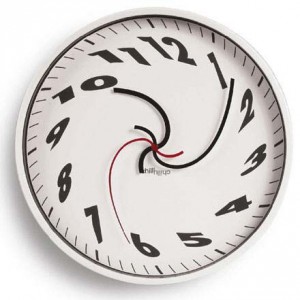 developed some hacks – ways to get the client to forget that I had just given an uneven massage.
developed some hacks – ways to get the client to forget that I had just given an uneven massage.
Fasten your seat belts.
Ask – Let the client decide – “Would you like me to spend all of our time today on your headache or do you also want a full-body massage?” Guess what the answer is 90 percent of the time…Full-body.
The clock – I drew a circle on an index card. The first 30 minutes was blocked in red, the next 10 in blue, the next 8 in yellow, etc. I hid the card behind my oil bottle, right next to my clock. The red zone was for the back and posterior arms. The next 10 minutes for posterior legs and feet. Eight minutes for anterior legs, eight for anterior arms. Four minutes for head and scalp.
Keep the card in view and practice, and you will run on time.
Okay, so what to do when space aliens have stolen your brain and you don’t have enough time to finish a full massage? When fudgsicles happen, make fudge!
Swoop – Big, long, slow, wasting Swedish effleurages. Three swoops to a limb will still trigger the parasympathetic nervous system. A timeless coma will result.
Hide – Stay in the room at the end of the massage and hold up the client’s robe in front of your face and conveniently stand in front of the clock. Offer to assist by holding the robe while they slip in arms and stumble out. “Let me help you with your robe.” It works.
I don’t recommend what one therapist did to me one day at an otherwise nice day spa. She carefully pointed out the clock to me to show that we were running on time. At the end of the session I got up and looked over at an empty space. She had removed the clock!
Adding Magnesium to Massage
Got Magnesium?
Turns out that might be a great slogan for massage therapists – if they look both ways and proceed with caution.
Magnesium as a topical aid, and along with ingested and intravenous magnesium, has been used for a very long time in the treatment of muscular cramps and spasms.
Magnesium is the other side of the calcium formula. The movement of calcium ions out of a cell make muscles contract, while magnesium ions make muscle fibers relax. For people in the relax biz, magnesium could come in very handy.
And many folks seeking a massage are likely deficient in magnesium, possibly because we don’t eat enough of the sources – green leafy veggies, beans and bananas.
Should you add magnesium to a massage?
Well, let’s look at what’s out there.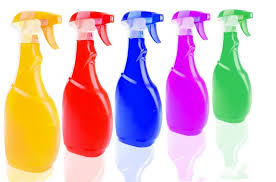
Epsom salt soaks are our most traditional way of introducing topical magnesium. Many therapists make their own retail packages for client to buy or take home after a massage. A few drops of lavender or eucalyptus added to the salts and an organza bag, and the massage therapist has a take-home item for you.
But how many times do you see clients who cannot physically get in or out of a bathtub? Or don’t have a bathtub?
Epsom salt compresses are the next step down – but we all know compliance with this advice may well be zero. What client wants to wrangle wet and dry towels and plastic sheets?
Epsom salt lotions now readily available in most drugstores are another good solution. These do, however, use some pretty synthetic petrochemicals to get the hardy Epsom salts to stay in solution. Some clients don’t want that.
Oh dear, leave it to the healthy marketplace to find solutions.
Now when I head off to the vitamin health food store there’s a little group of magnesium topicals at the ready. And here’s the rub. Some don’t feel real good when applied to the skin.
My favorite one is magnesium oil spray, which is magnesium chloride. Yup, a salt. After a nice vigorous deep tissue massage on my professional test body, my spouse, I added a spritz to a tight shoulder. Immediately producing a stinging feeling described to me as rubbing salt on a wound. Run for the wet towels.
I like to use the magnesium oil spray on myself right after the shower. I tell clients to avoid it after shaving, to avoid the ouch factor.
After that experience with my professional test body I have never sprayed magnesium oil on an area post massage. I notice the makers were suggesting it as a massage oil additive, but after my experience with my unhappy test body, I’m not putting it on freshly massaged skin anytime soon.
Other forms of magnesium abound. I don’t go there with magnesium pills or drinks, largely because that’s not what I do. I massage, and telling someone to take something internally seems a bit out of my expertise area.
But for people who might need it for night cramps or diet deficiency I let them know it is out there, and they need to read and follow directions. Magnesium isn’t good for weak kidneys and in large amounts ingested magnesium is a super-dooper laxative!
Time Management
Time management in the massage room can be tricky. Even with a thorough intake, you never know what you’re going to find until you get your hands on someone. It’s important, though, to keep your word to your clients. If, somehow, you can’t do what you said you would and you need to alter the plan, it’s vital that you keep the client in the loop and have them make the call.
It can be so frustrating when a massage therapist says they’re going to do something for me in a session that doesn’t happen, and some of the areas we discussed never even get touched. When I’ve asked therapists why that happened, commonly what I hear is, “I’m so sorry, I was so focused on your shoulder (or your back, or your neck, etc.), that I ran out of time.” That’s a common challenge for many therapists, of course, but as a client I’m left wondering, don’t I get a say?
So, while of course it is best to stick to what you told your client you would do, if you find that the time has gotten away from you and you won’t be able to deliver on your stated plan, my advice would be to get the client involved. Don’t just keep going and hope that they won’t notice. Honestly, you know they will. After holding an expectation based on your conversation during the intake, they’ll be disappointed, which can break their trust. They may not say anything, and they might even tip you, but you’ll never see that client again.
If you know that you are struggling with this, develop ways to recover gracefully, and always keep the client involved. You can easily say something like, “I’m sorry, it looks like we won’t have a lot of time to address your arms and your legs. If I were to spend more time on one of those areas, which would you like it to be?” That way, you preserve your relationship with the client, even if you don’t get to all the work you’d discussed.
Getting Lost in a Body Area
 Clients can seek massage for stress relief and relaxation, or for therapeutic work on a specific problem. Sometimes a client with an acute problem comes for general relaxation and stress relief. You can’t assume that just because they have a chronic issue that that’s always why they’re there.
Clients can seek massage for stress relief and relaxation, or for therapeutic work on a specific problem. Sometimes a client with an acute problem comes for general relaxation and stress relief. You can’t assume that just because they have a chronic issue that that’s always why they’re there.
I have a chronically unhappy left shoulder due to car accident that I was in over a decade ago. My shoulder loves work, and my shoulder is perennially a thing of curiosity to every massage therapist because it’s so clearly adhesed, plus it moves around when it’s receiving massage work. What this can do, though, is cause some therapists to get “lost” in my shoulder area at the cost of doing work in other areas where I also would like to receive massage.
While therapists often feel that spending extra time in a problem area is part of doing more effective work for the client, the truth is that sometimes clients are also looking forward to other areas being worked. So, how do you strike a balance when you know that you just hit “the mother-load of all muscle problems” and yet you only have an hour? The answer is communication, communication, communication. Ask questions like:
“Do you feel we have worked this area sufficiently?”
“Should I spend more time there, or is it time to move on?”
“Would you like me to spend another 15 minutes here? It may mean that we don’t quite get to cover your arms or legs (or whatever other area is not a primary complaint).”
Share with the client what you are feeling with your hands and what would be the benefit of the additional work, but let their priorities guide your massage plan for the day. If the issue feels like one that would benefit from a more targeted session, go ahead and suggest that the client schedule a time to come back in and focus on that specific area. Make sure you give the problem areas their due, but take care to avoid getting “lost” in a body area.
Wrangling the Walk-In Massage Client
Sometimes a client just appears looking for a massage. Literally a walk-in. What can a therapist do to turn a lookie-loo into a booking?
These potential clients may be trying to size up you and your spa. Offer a quick tour.
If they like you and your spa, but are reluctant to make an appointment, offer a special. What’s a special?
- I can do a half-hour massage for the regular price and if you like it you can extend it to a full hour at a discount of $10.
- I can offer you a half-hour massage for a $10 discount and if you want to extend to an hour the discount will be $15.
If you are already booked and waiting on a client, offer a specific 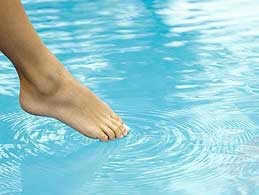 appointment option:
appointment option:
- I can schedule you today at 3 p.m. for a deep tissue session. We can do an hour or 90 minutes…?
Are you way too busy today? Offer advice on getting an appointment at another time.
- I can usually get people in with a few days notice. What about this time later this week?
Showing potential clients around, answering a few questions and being friendly can turn the walk-in prospect into a client. Try it. It works!
After all, the walk-in client is there because they want a massage.
Do You Know Your Massage Client’s Hobbies?
 In today’s digital age, with so many of our clients (and ourselves!) spending so much time hunched around our smartphones, curled up with our tablets, and bent over our laptops, a new syndrome, which I call “computeritis,” seems endemic. It may be common for massage therapists once they hear of a client’s heavy use of such devices to jump to conclusions as to the culprit of the client’s pain. It’s important that ‘Computeritis” not be our first or only assumption when a client presents with neck or shoulder pain and tension. It’s vital that we get a fuller picture of our client’s lifestyle, without which we could very well be assuming and jumping to incorrect conclusions and to an incorrect treatment approach.
In today’s digital age, with so many of our clients (and ourselves!) spending so much time hunched around our smartphones, curled up with our tablets, and bent over our laptops, a new syndrome, which I call “computeritis,” seems endemic. It may be common for massage therapists once they hear of a client’s heavy use of such devices to jump to conclusions as to the culprit of the client’s pain. It’s important that ‘Computeritis” not be our first or only assumption when a client presents with neck or shoulder pain and tension. It’s vital that we get a fuller picture of our client’s lifestyle, without which we could very well be assuming and jumping to incorrect conclusions and to an incorrect treatment approach.
I’ve been working in a massage clinic for 12 years now. One time, I saw a therapist go in to do an intake with a client and come out only a minute later to give the client a chance to disrobe and get on the massage table. Shocked to see that the therapist was back out so quickly, I quietly observed,
“that was a quick intake.”
“Oh yes,” said the therapist. “The client seemed eager to get on the table. So I did a few questions, but kept it short.”
“Great,” I said. “What’s the problem with the client?”
“Well, they do a lot of computer work, so they have a lot of tension in their neck and shoulders.”
“I see. And does the client have any hobbies?”
“I don’t know,” said the therapist. Oops!
Years ago, I had a client with a lot of shoulder pain. He worked with software, so it would have been easy for me to assume that, like everyone else, he was also suffering from computeritis and treat him accordingly. But I asked the patient when he felt his pain and tension the most, and he answered, “when I’m on the field.” Wow, that bit of new information provided the missing piece of the puzzle and completely changed my understanding of his condition. It turned out that he was a pitcher on a baseball team and his pain was due to his pitching technique. I learned from that experience never to assume that someone’s job sums up their lifestyle and to always get a little more information, even if it means taking an extra minute or two during intake.
Massage the Full Length of Muscle
 Let’s say you have a big, beefy athlete of a client on the table, with lots of delicious areas to work on. You dive in. You get the belly of the muscles. You get into the soleus, work their erectors. You proceed to work on their arms and get into the deltoids. Everything’s great, but you have to ask yourself: are you massaging the whole muscle?
Let’s say you have a big, beefy athlete of a client on the table, with lots of delicious areas to work on. You dive in. You get the belly of the muscles. You get into the soleus, work their erectors. You proceed to work on their arms and get into the deltoids. Everything’s great, but you have to ask yourself: are you massaging the whole muscle?
I find that, a lot of times, therapists will focus on the belly of the muscle, spending lots and lots of time getting in there: fluffing, buffing, twisting, turning, compressions, and such, but not tracing the muscle all the way to its origins or insertions. It is important to recognize that a muscle has its own intelligence, and when you touch any part of it, the rest of it wants to be touched, as well. If you’re going to use a technique, be sure you use it to work the full length of the muscle, to its tendon and its attachment point. The muscle doesn’t end in the middle. It ends where it ends, and it starts where it starts. Go from end to end, and your clients will love you even more-so.
Massage Hygiene and the Return Visit
People who give massages hopefully like receiving massages. I know I do. When my therapist friends are out of town or otherwise engaged, I have a few places I will slip into to try their hands.
I found one therapist purely by chance who really knows how to do meridian and nerve-based massages, something my low back appreciates greatly. So I was surprised when I got into the shower one day a few hours after my massage and found large, red welts on my back, suggesting that I had teenage cystic acne.
In the mirror I saw big, red and itchy bumps all over my back, especially on the lines of the sideline meridians. I had either had a reaction to the massage oil or somehow some sort of bacteria had been introduced into the skin during the massage.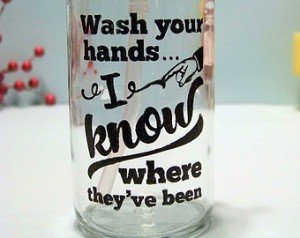
I thought, probably like many clients, that I should simply not visit this therapist again. Something had been dirty, the oil, the bottle, the hands, something. I had showered just before the massage, so I did not think it was my skin. Oh well.
Then perhaps, like some clients, I though about the affection I had developed for this particular therapist. I liked her style and her results. I decided to see her again and tell her about my reaction.
Once we were alone in the massage room, I explained that I had some sort of reaction to the massage and had been nursing the bumps with arnica and witch hazel. I showed her the pattern on my back. She looked stunned.
“But I always wash my hands, and I make sure the linens are clean and fresh.” she said. I pointed at the oil bottle. “Do you wash it? Wipe it? Does anyone else use it?”
Hmm. That was possible, she said.
As massage therapists we see a lot of people and often use the same bottles and oils on each client. Can someone have sensitive skin? Sure. But what if it was the oil layer on the outside of the bottle? What if the oil itself was contaminated with bacteria?
No sure answers there. But here are the basics of keeping clean between massages and during successive massages in a busy practice or clinic.
- Always wash hands after and before a session. Washing hands at the end of a session is a half-measure. You will handle materials, perhaps dirty linens, doorknobs, credit card machines, etc. before your next massage. Wash hands again before you start.
- Wash the exterior of your oil bottle as well, especially if someone else is using your room and supplies on your days off. Slick bottles can transfer bacteria to all of your clients that day and beyond. I wash oil bottle every day and use anti-bacterial wet wipes to clean bottles between clients.
- Never stack linens for more than one client. Some therapists think they have found a great way to avoid scrambling for linens by putting five or six settings on the table. Well, no certain infections, such as scabies, can be passed from one sheet to another. You don’t want to be explaining your timesaving system to an inspector from the health department.
- Hand washing is done with warm to hot water and soap and requires rubbing both hands together for at least 15 seconds. Rinsing, one-handed washings, or other half-measures don’t count. Over the years I have learned to follow-up my hand washing with a cold-water rinse. Good for my poor paws.
- When using a jar or tub of massage cream, use a clean or disposable spatula to scoop from the jar. If you stick your fingers in the jar, you are cross-contaminating any bacteria to your whole client book for that day and as long as you use that jar. Cover the jar in between scoops. Better yet, use oil with a pump or flip-top.
- Use cleaning cloths with hot water and a cleanser or anti-bacterial wet wipes on common surfaces such as towel warmers, crock pots, essential oil bottles, anything in the room that might be touched by oily hands. If you only clean when it is slow, or you rely on a cleaning crew for these details, you may be spreading bacteria and other germs.
- Some massages start with a foot massage, either because of the client’s symptoms, wishes or the therapist’s training. Tell your client as you finish their feet you are going to wash your hands and will be back in a moment. Some people have fungal infections, bacteria, etc., or go barefoot, and your foot massage can spread skin infections to other areas of the body.
Better safe than sorry. By the way, I decided to stick with my therapist, largely because she was concerned and eager to learn how to prevent more skin reactions. Just like a client, I appreciated her attitude and its promise for future reaction-free massages. Cleanliness fills your book.
Don’t Let Your Massage Techniques Go Stale
 I’ve noticed a ‘narrowing syndrome’ that sometimes develops among experienced massage therapists. When you first go to massage school, you learn all sorts of techniques which are new and exciting, and you try them all on your clients. Then, as you practice and become increasingly more confident, you find that a certain set of techniques emerge as your favorites. You develop a level of comfort and expertise with them, and you use them increasingly often. What can happen over time, though, is that by favoring those few techniques, many of the others that you learned go unpracticed and, eventually, get forgotten. This narrowing of your repertoire can lead to clients experiencing massage from you that consists entirely of only one or two techniques.
I’ve noticed a ‘narrowing syndrome’ that sometimes develops among experienced massage therapists. When you first go to massage school, you learn all sorts of techniques which are new and exciting, and you try them all on your clients. Then, as you practice and become increasingly more confident, you find that a certain set of techniques emerge as your favorites. You develop a level of comfort and expertise with them, and you use them increasingly often. What can happen over time, though, is that by favoring those few techniques, many of the others that you learned go unpracticed and, eventually, get forgotten. This narrowing of your repertoire can lead to clients experiencing massage from you that consists entirely of only one or two techniques.
For example, I have experienced massage from seasoned therapists that consisted of nothing but slow friction strokes. While those may be effective, that singular focus risks a massage that can feel repetitive and not entirely effective. What’s more, it’s important to remember that different techniques produce different effects, each suited to the various needs presented by clients. So, while using a lot of deep friction can be fine, it could be even more beneficial if you were to occasionally throw in some invigorating petrissage, or soothing effleurage.
The antidote to this ‘narrowing syndrome’ is to continue to keep your skills fresh by ensuring that you not only take continuing education, but build up a network of different therapists that you can occasionally get massage from, as well as give massage to, so that you are able to get honest feedback from other professionals in the industry and continue to be exposed to different techniques. This way you will keep your toolkit of techniques broad enough to provide your clients with varied, effective, and pleasant massage.
Finding the Right Massage Speed
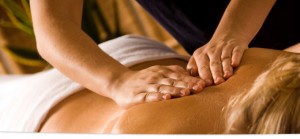 We’ve all heard from clients the occasional horror stories of their having been “brutalized” in a session with another massage therapist in which techniques were used that were so deep as to be painful and leave them bruised. Some of us may have even experienced that type of massage ourselves. How does that happen?
We’ve all heard from clients the occasional horror stories of their having been “brutalized” in a session with another massage therapist in which techniques were used that were so deep as to be painful and leave them bruised. Some of us may have even experienced that type of massage ourselves. How does that happen?
While clients do have different levels of sensitivity to pressure and it’s always important to check in with them about it, it’s also essential to consider the speed with which we administer deep techniques. A good rule of thumb is to remember that if you know that you’re going for depth, slow way down and make sure that the tissue lets you in first. Otherwise, you’re going to be tearing through muscle tissue and causing your clients unnecessary pain. That kind of pain can alienate clients, not just from you as a practitioner, but from massage in general. Then their stories to their friends and family can even leave others scared of ever getting massage in the first place.
If you know you’re strong, really take the time to check yourself and see if your speed is correct for the level of pressure you are using. If you think that you might be going too fast, slow down and keep checking in with your client. To keep in touch with the client’s experience as you work your way in, you can ask:
“How’s the pressure for you as I work here?”
“Is it ok if I go a little deeper now?”
“How’s that?”
Remembering that it’s not just about the pressure, but also the speed can help you better calibrate your deep work on your clients to ensure that they enjoy an effective session with you that leaves them feeling great.






